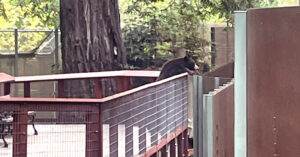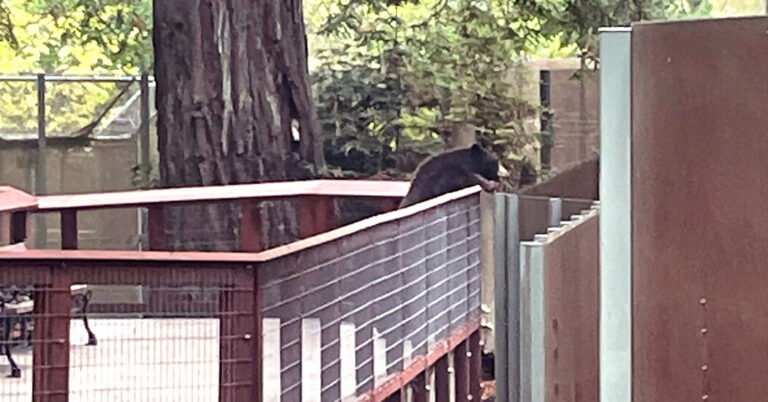“The rise of Japanese cuisine in India is more than just a culinary trend – it’s a cultural shift that reflects evolving tastes and global exposure,” says Suchismita Roy Chowdhury, manager of the Kyoto-style speakeasy bar ZLB23 at The Leela Palace Bengaluru that opened in 2023. The bar ranked No.31 at the recently concluded Asia’s 50 Best Bars 2025.
The trend is not restricted to a particular city. Last summer, foodies in Amritsar flocked to a new omakase dinner Shiso, hungry for a bite of salmon tataki, karaage chicken, and king oyster yakitori. Espressos Anyday, a café that opened in Gurugram late last year, is the Millennium City’s hottest spot for matcha. Earlier this year, restaurateur A.D. Singh opened The Love Hotel, a Japan-inspired cocktail room, in Delhi. Goa’s buzziest openings are Mizu’s new outpost and a ramen space called Jsan. “Global travel has exposed more Indians to authentic Japanese food, and the rise of social media has made people more adventurous and eager to try new things,” Singh says, explaining the wave.
Around 233,000 Indians travelled to Japan in 2024, marking a record-breaking year for Indian tourism to the country and up from 166,394 visitors in 2023. Until recently, travelling to Japan was considered difficult because of high costs, visa issues and lack of vegetarian dining options. But Japan has been actively reaching out to Indian tourists over the past few years. Last year’s introduction of an e-visa for Indians, coupled with more direct flights, is widely seen as a driver of tourism. Japan’s yen dropped to its lowest level in April last year since 1990 and has made travel more affordable.
“The post-colonial generation in India was looking at the West but now it’s time for Asia… if you take anime as an example, 60% of all the content is consumed in local languages. There’s tremendous influence of all things Japanese today, especially among the younger generation,” says Udai Pinnali, CEO of Aditya Birla New Age Hospitality that launched Supa San, an izakaya style cocktail bar, in Mumbai’s Bandra Kurla Complex earlier this year.
Noticing the interest, the Japanese government named chef Nooresha Kably, co-founder of Japanese restaurant Izumi in Mumbai and Goa, and Brehadeesh Kumar, chef-owner of Ginkgo in Pune, as its goodwill ambassadors for the promotion of Japanese cuisine in February this year. “I realised the cuisine has potential and enrolled myself in Tokyo Sushi Academy in 2017. It took a year to open Izumi as a 16-seater,” Kably says. “When I started Izumi in 2018, if you asked anyone to try Japanese food, they would say ‘no, we don’t eat raw food’. Most restaurants were doing salmon and tuna, but we brought ingredients like hamachi, eel and wakame (seaweed) that were only in five-star hotels until then,” Kably says. “Earlier, hardly anyone who dined at Izumi had been to Japan, but today people share their itineraries with me all the time.”
The popularity can also be attributed to the perception of Japanese food being healthy—it uses fresh ingredients and clean cuts, and adheres to provenance. Fermentation lies at the heart of the culinary philosophy, and gives the food its umami. The discipline of chefs and bartenders towards their craft, the concepts of ‘hara hachi bun me’, or eating until 80% full, the Okinawa lifestyle that often sees people live past 100 and even the recent Japanese walking trend all point to the healthy nature of their lifestyle.
MANGA-INSPIRED MEALS
During the covid-19 pandemic, Indian interest in Japanese anime and food shows peaked. “One can trace the link between the growth of ramen in India to (ninja) Naruto’s love of the dish. As more people experience anime, they want to try out the cultural elements,” says Hamza Sayed, founder of The Comic Store in Mumbai.
This year, while Studio Ghibli-inspired AI art trended across the world, chef Anumitra Ghosh Dastidar of Bento Bento in Bengaluru brought back her Studio Ghibli popup, featuring Satsuki’s bento box from My Neighbour Totoro, onigiri from Spirited Away and mackerel fry from Up On Poppy Hill. “Using pop culture became a way to bring us all together and celebrate it as well as the characters,” says Dastidar. She is a fan of salaryman (a term used for daily workers) food such as ramen and bento boxes as the meals are always balanced because you get carbs, vegetables and meat at one go.
Kaushal Karkhanis, a communications designer and travel content creator who visited the World Expo in Osaka, Japan during sakura season in April this year, says tourists were visiting towns linked to anime characters like Doraemon and Naruto to dine. Karkhanis also visited Japanese diners and found great comfort in the salaryman menu. “I think it’s inspired from Western QSR chains like McDonalds but Japan does things in their own way. You will find office workers stepping in for a quick meal and the most popular dish was rice with miso soup and a protein, like a DIY thali…. I found it fascinating that sushi was hardly as common as we make it out to be in India.”
Singh became fascinated with the cuisine in 2006 during a trip to Dubai. “It was our first exposure to Japanese cuisine, and we (he and his wife) both thoroughly enjoyed it,” recalls Singh. Japanese restaurant Guppy was born in Delhi in 2013, and Hello Guppy in Mumbai, an all-day Japanese cafe, in 2017. In May this year, he opened The Love Hotel Delhi’s Lodhi Colony, a cocktail bar inspired by Japan’s ‘rabu hoterus’, or hotels primarily meant for couples to spend intimate time. The red lights, pink handcuffs and a “cookie jar” with massage oils, lollipop, feather ticklers and a condom to take home with the bill leans into the allure of Japan’s culture of playful erotica. “The ‘love hotels’ or ‘rabu hoterus’ have been part of Japanese culture for centuries…. We wanted to reimagine that spirit for Delhi… It’s not a replica, but a heartfelt homage,” Singh says.
There’s been a turn towards micro-cuisines with restaurateurs championing dishes such as ramen or tempura. Where sushi would once be the highlight of a Japanese menu, today most also serve katsu curries, yakitori, and gyozas. “Earlier, if certain places made tempuras and gyozas, they wouldn’t call themselves Japanese because that would alienate Chinese foodies. The cuisine is about specificity now, rather than being hidden behind Pan-Asian cuisine,” says Kavan Kuttappa of Naru Noodle Bar in Bengaluru.
Nikkei or Japanese-Peruvian cuisine with it signature ceviches and tiraditos is trending too. Chef Randy Cultivo, who recently launched a Nikkei menu at Wabi Sabi at The Oberoi, Bengaluru, says, “Nikkei allows us to add more flavour and texture, whether it is creating mayo style sauces, carpaccio or ceviche, use of smoked peppers and herbs like coriander. It is a fun and delicious amalgamation of taste and texture,” he says. Nikkei cuisine ticks two of boxes for Indians — technique-forward Japanese preparation and Indian-style sour and spicy taste profiles.
WHAT’S NEXT?
Goa’s most exciting new Japanese restaurant is JSan, a ramen and bar bites space in Anjuna. Founder Vishesh Jawarani says he’s obsessed with the perfect that’s part of Japanese culture. For example, to learn how to make broth correctly for his Tonkatsu pork ramen, Jawarani studied how animal bones break down and add flavour over 24-hour cycles. He insists that if the bones don’t come from a particular farm in Mangaluru in Karnataka, his broth wouldn’t taste the same. “It’s like having a starter for sourdough; so it’s like having a mother broth or an older broth and mixing with fresh broth to allow it to ferment and that imparts a sweet flavour from pork bones into the broth,” he explains, adding that it took him three years to understand the entire process. The self-taught ramen chef, who holds a business degree, says he became a chef to follow his passion for Japanese cuisine, which came from his childhood love for anime.
Japan’s greatest culinary export of recent times is undeniably matcha, made from shade-grown green tea plants. Karreena Bulchandani, who runs Mokai, a Japanese-style coffeehouse in Mumbai, has been watching diners obsess over Japanese food and desserts for the past year, but even she was blown away when the matcha wave hit. “We started serving matcha 1.5 years ago and today 60% of our orders are for matcha. Even people who don’t like matcha flavours get sweet and fruity options because it’s a trend and because of how beautiful it looks,” she says.
With so much Japanese fare at hand, it can be difficult to imagine there’s more to come, but restaurateurs are placing bold bets on the future. “What comes next is small format Japanese dining. We’ve had 70-100 seats but the future will be about specialised places dedicated to sushi, sake or omakase dining,” Singh says.
It looks like the sun is likely to keep rising on Japanese cuisine in India.









